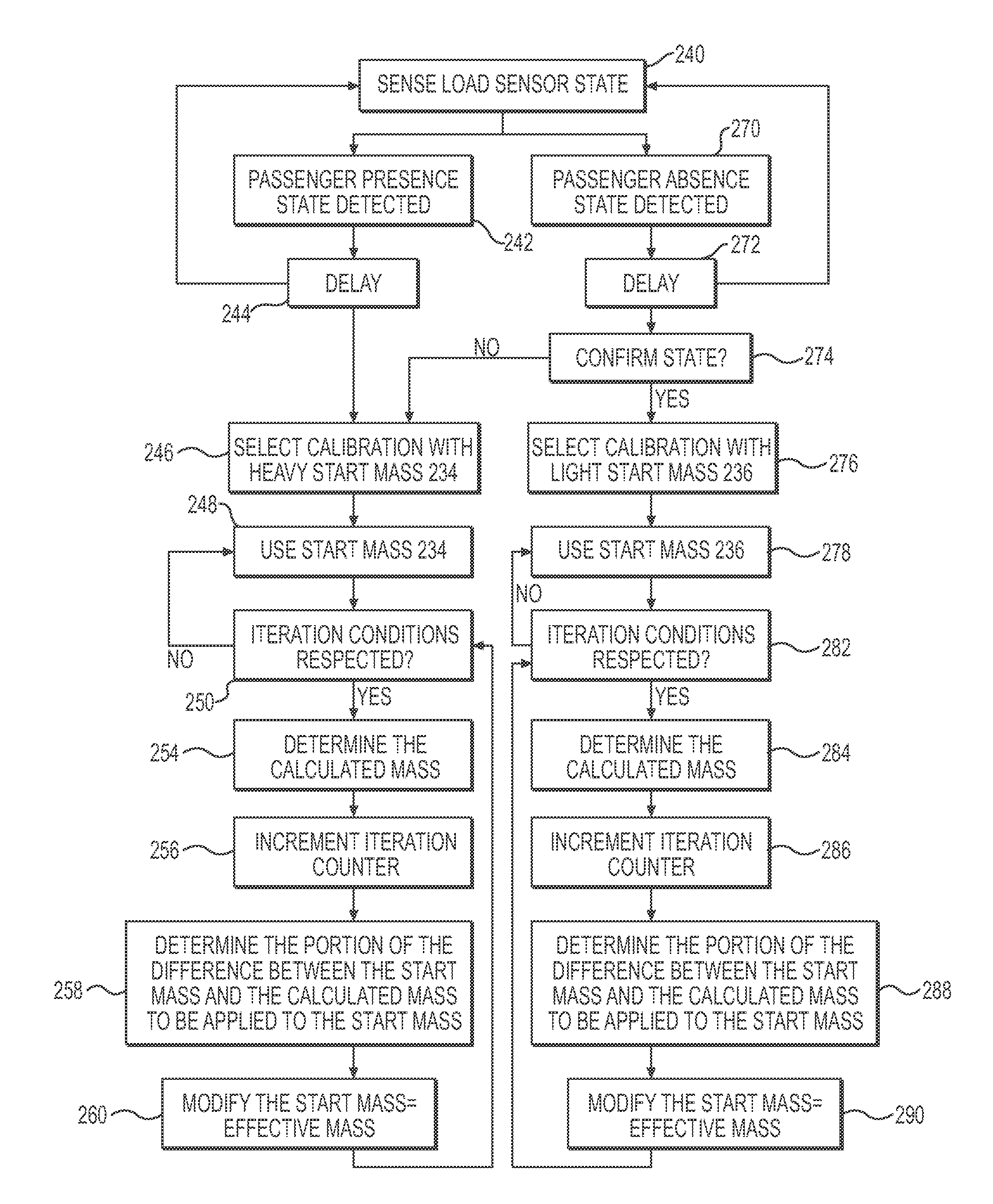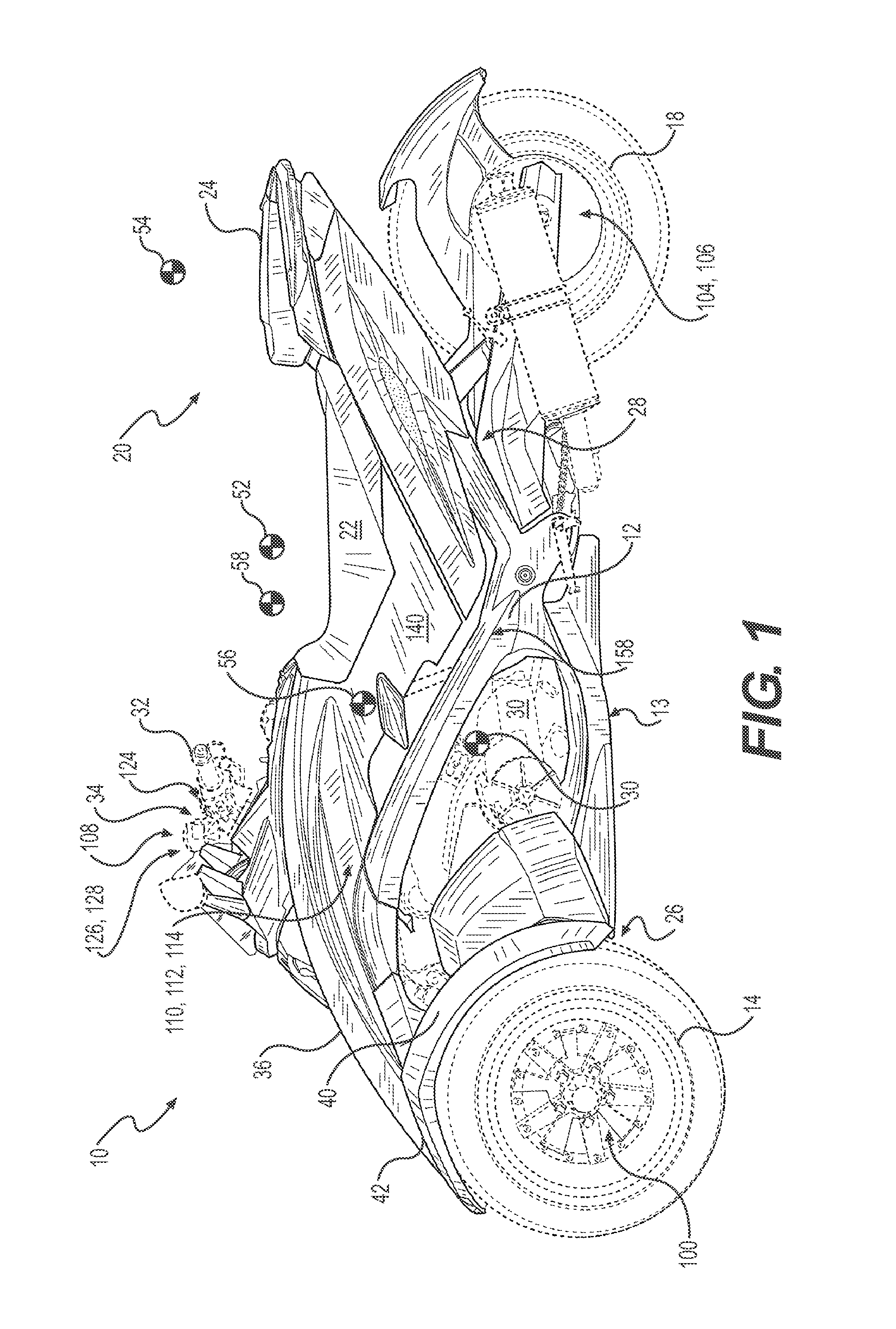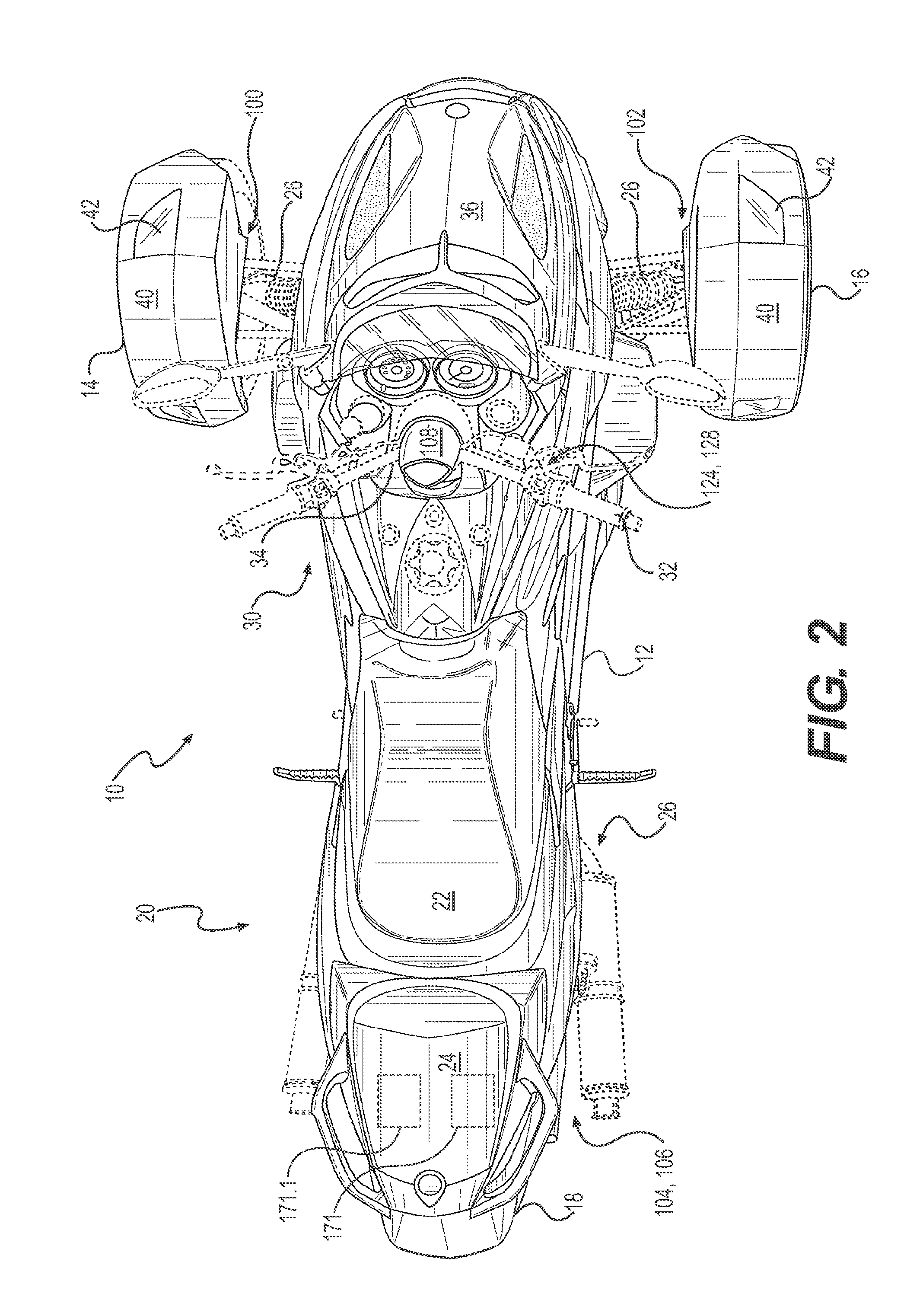Load sensor for a vehicle electronic stability system
a technology of electronic stability control and load sensor, which is applied in the direction of non-denominational number representation computation, analog and hybrid computing, and complex mathematical operations, etc. it can solve the problems of less maneuverability, large vehicle size, and particularly affecting the stability of light-weight vehicles, so as to maximize the handling of the vehicle, improve the selection of the required outputs, and limit the performance of the vehicle
- Summary
- Abstract
- Description
- Claims
- Application Information
AI Technical Summary
Benefits of technology
Problems solved by technology
Method used
Image
Examples
first embodiment
[0076]The ESS 140 uses predetermined calibrations stored on a computer readable media inside the ESS 140. The data can be updated by connecting the ESS 140 on Internet through a computer to download into the ESS 140. Alternatively the ESS 140 can use its Input / Output port to download updated calibrations. The calibration is used for determining outputs based on the inputs received from at least some of the plurality of sensors. One fundamental input is the actual total mass of the vehicle 10. The calibration is selected in function of the mass of the vehicle 10 to ensure the strength and timing of the outputs are corresponding with the overall mass of the vehicle 10. Each calibration is adapted to a different mass of the vehicle 10. Since no actual mass is provided to the ESS 140 at start-up, a start mass 232 will be used to define any ESS 140 outputs shortly after the vehicle begins to move. In a first embodiment, the start mass 232 is an estimation of the complete mass of the vehi...
second embodiment
[0078]Still referring to FIG. 7, one would appreciate that the start mass 232 has a significant effect on the performance of the vehicle. To make sure the vehicle is safe when a heavy driver and a heavy passenger with cargo are onboard, the start mass 234 should be increased as indicated in a second embodiment illustrated in FIG. 8. In this scenario, the ESS 140 outputs will safely take into consideration the possible heavy mass of the vehicle 10. The start mass 234 should be high enough to ensure adequate safety, although, in turn, the ESS 140 will significantly reduce the performance of the vehicle, even if only a single light driver is onboard the vehicle is stable in all riding conditions.
third embodiment
[0079]For this reason, it is better to have two start masses 234, 236, as shown in FIG. 9 illustrating a This ensures sufficient safety when the vehicle 10 accommodates both a driver and a passenger and significantly reduces the adverse effects on the vehicle's performance if only a driver is detected on the vehicle 10. The passenger seat sensor 118 is used to determine the presence or the absence of a passenger on the passenger seat portion 24 of the vehicle 10. In other words, if the passenger seat sensor 118 is in the passenger absence position, a first calibration, having a start mass 236, would be used. The start mass 236 is estimated to be close to the maximum mass allowed for vehicle 10 with a single driver. Start mass 236 is also updated with continuously calculated mass changes 230 on both the heavier and the lighter sides. This way the vehicle 10 will provide maximum performance while preventing exceeding the safe handling threshold.
[0080]On the other hand, if the vehicle...
PUM
 Login to View More
Login to View More Abstract
Description
Claims
Application Information
 Login to View More
Login to View More - R&D
- Intellectual Property
- Life Sciences
- Materials
- Tech Scout
- Unparalleled Data Quality
- Higher Quality Content
- 60% Fewer Hallucinations
Browse by: Latest US Patents, China's latest patents, Technical Efficacy Thesaurus, Application Domain, Technology Topic, Popular Technical Reports.
© 2025 PatSnap. All rights reserved.Legal|Privacy policy|Modern Slavery Act Transparency Statement|Sitemap|About US| Contact US: help@patsnap.com



